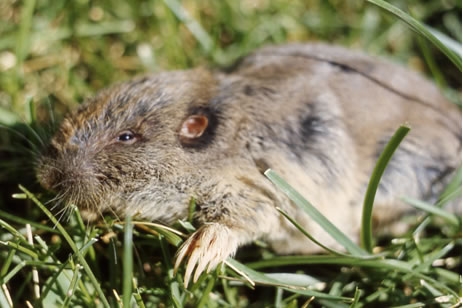Facts About Gophers

Gophers are small, furry rodents that burrow tunnels through yards of North America and Central America. Their full name is pocket gopher because they have external fur-lined cheek pouches, or pockets.
The pockets go all the way back to its shoulders and are used to carry food from one location to another. Gophers can even turn their pocket cheeks inside out, according to the Animal Diversity Web (ADW).
Size
Gophers are medium-sized rodents. They are larger than mice, but typically smaller than rats at around 5 to 14 inches (12.7 to 35.5 centimeters) long. They weigh a few hundred grams (1 lb. or more). A few species of Central American gophers reach almost 1 kilogram (2.2 lbs.).
Gophers also have four large incisors, which continue to grow throughout the gopher's life. Gophers can close their lips behind them; this keeps the dirt out while they dig.
A gopher's stout body is built for digging. They have small ears and eyes, and no distinct neck. Their legs are short and powerful end, and their broad feet have large claws.
Habitat
Gophers are found in North and Central America, preferably in areas with loose, sandy soil. They make their homes in burrows that consist of many tunnels.
These tunnels have various uses, depending on their size. Shallow tunnels are used for foraging and deep tunnels are used for nesting, food storage and latrines, according to the ADW. Tunnels can reach 200 to 2,000 square feet (61 to 610 square meters), with the nest and food storage chamber up to 6 f (1.8 m) deep.
Get the world’s most fascinating discoveries delivered straight to your inbox.
It is easy to tell where a gopher's home is. They push dirt to the surface as they dig, which creates long mounds on the surface.
Habits
Gophers are active during the day and are fossorial, which means they live most of their lives underground. They eat, forage, sleep and have their babies underground.
They do all of this alone, though. Gophers are not social creatures, at least with their own kind. Often, gophers will share their burrows with other creatures.
Gophers are active all year long and don't hibernate.
Diet
Gophers are herbivores, which means they eat vegetation. Though they eat the tops of plants sometimes, they are mostly interested in the roots and tubers of the plant.
When they eat top-side, the gopher will poke itself out of a "feed hole" just enough to grab a nearby plant. Then, they pull the entire plant into their burrow or nibble off some of the vegetation before popping back into their hole.
Offspring
Gophers reach sexual maturity about 1 year of age. How many babies a female gopher has each year depends on how much water the area where she lives gets. In non-irrigated areas, females will have one litter per year; in irrigated areas, females may have up to three litters per year, according to the University of California. Each litter typically has five to six young and a gestation period of around a month. Baby gophers are called pups.
The mother stays with her pups only for a few weeks; after that, she sends them out of the burrow. As soon as the young are out on their own, they build their own burrows. They will live up to 3 years.
Classification/taxonomy
Here is the taxonomy for gophers, according to the Integrated Taxonomic Information System (ITIS) and the ADW:
Kingdom: Animalia Subkingdom: Bilateria Infrakingdom: Deuterostomia Phylum: Chordata Subphylum: Vertebrata Infraphylum: Gnathostomata Superclass: Tetrapoda Class: Mammalia Subclass: Theria Infraclass: Eutheria Order: Rodentia Suborder: Castorimorpha Family: Geomyidae Genera:
- Cratogeomys (Mexican pocket gophers); eight species
- Geomys (Eastern pocket gophers); nine species
- Orthogeomys (giant pocket gophers and others); 11 species
- Pappogeomys (Southern pocket gophers); two species
- Thomomys (Western pocket gophers, Northern pocket gophers and others); nine species
- Zygogeomys (Michoacan pocket gophers); one species
Conservation status
Most gophers are listed as least concern by the International Union for Conservation of Nature and Natural Resource's Red List of Threatened Species. There are some exceptions, though. The Michoacan pocket gopher is listed as endangered and the big pocket gopher and the tropical pocket gopher are listed as critically endangered, while the desert pocket gopher is listed as near threatened. These species are in particular trouble because their populations are decreasing or their habitats are fragmented or very small.
Other facts
Because they like to burrow under gardens, gophers are considered pests in some areas.
The evolutionary history of pocket gophers is based on fossils found in North American that are 33.7 million to 28.5 million years old, according to Encyclopedia Britannica.
Gophers have flat bodies that make it easy for them to squeeze through their tunnels.
Additional resources




